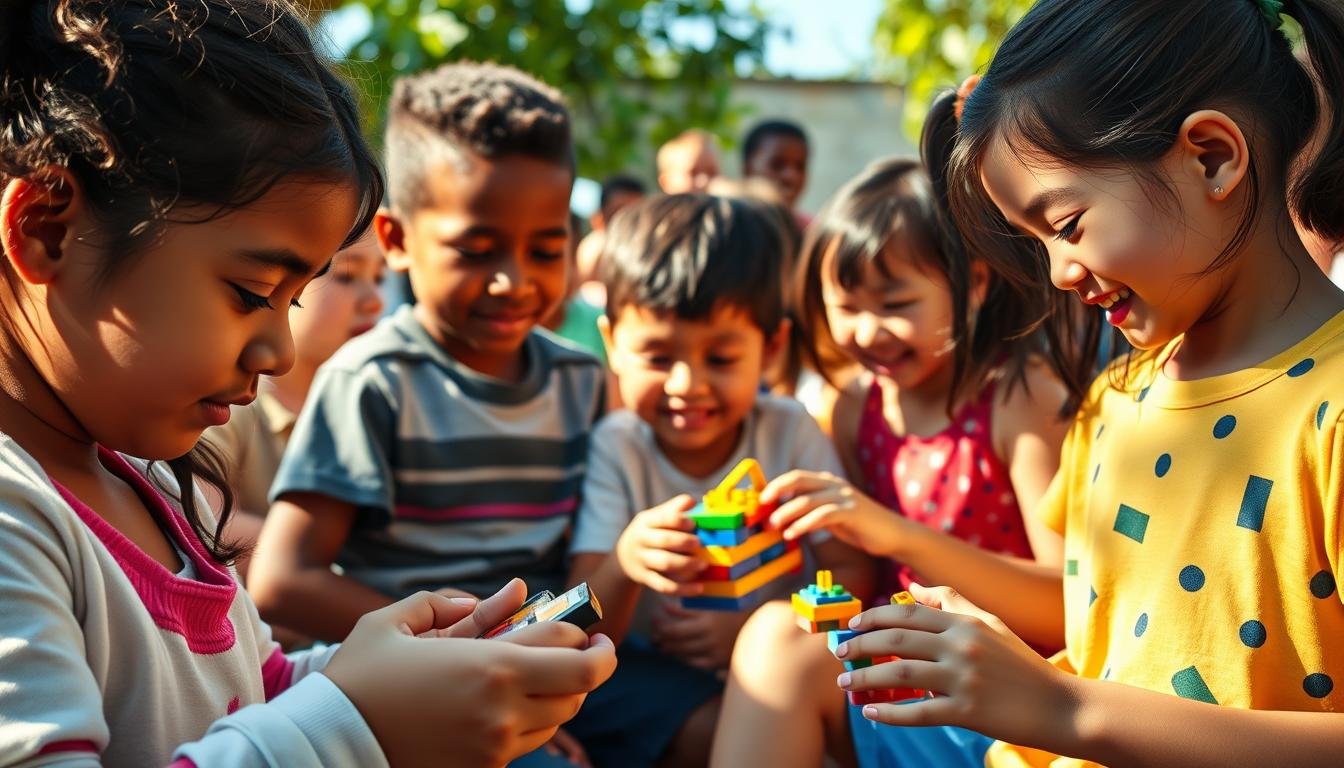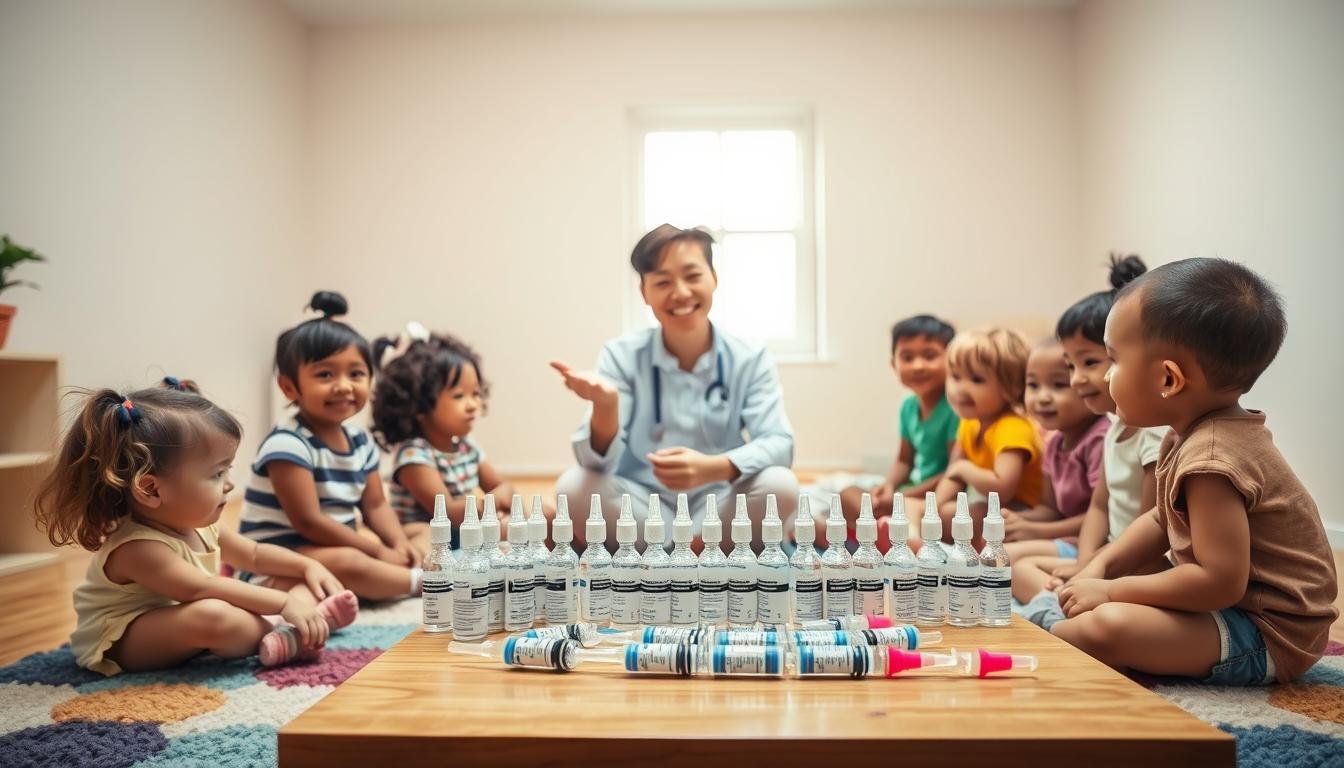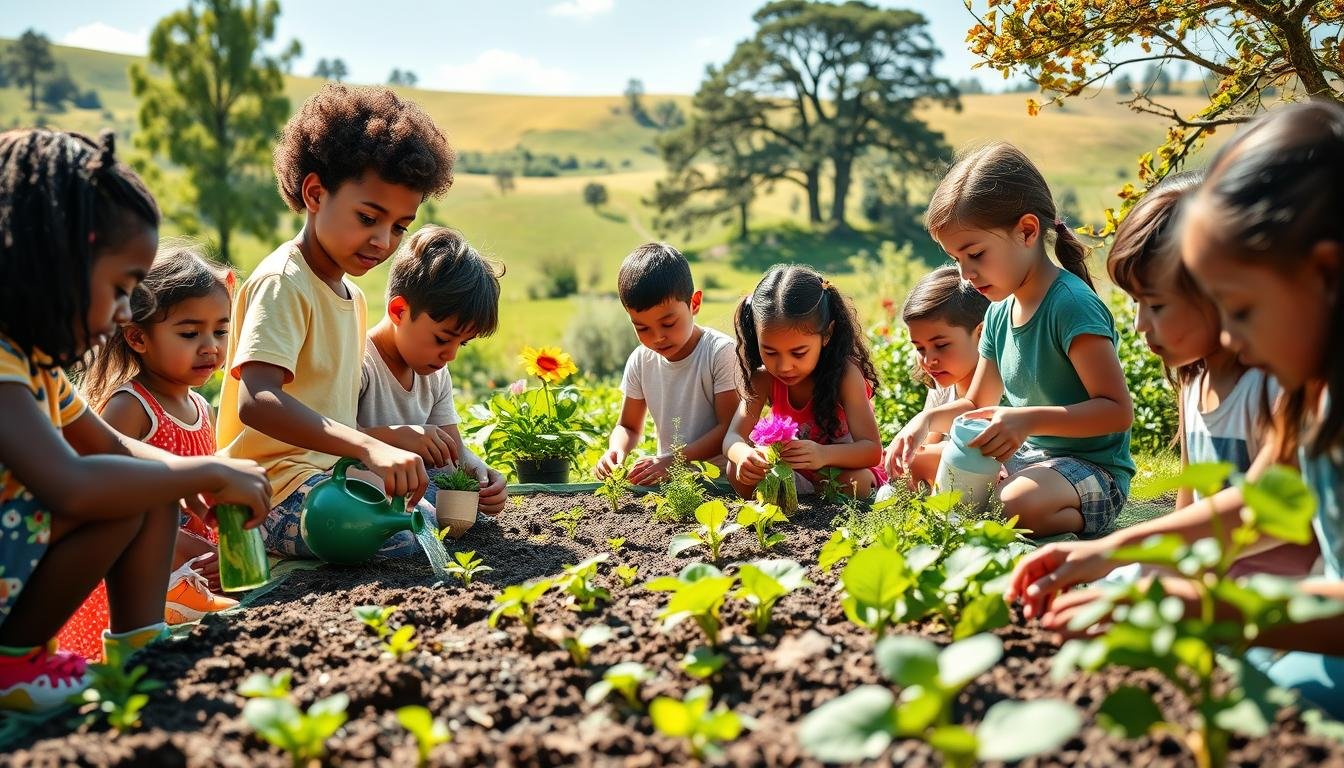Have you thought about your child’s unique intelligence? It’s about more than good grades. Only 50% of a child’s potential comes from genetics. So, what about the other half? It’s shaped by nurturing intelligence and affected by the environment. This might uncover your child’s hidden genius.
We all want to boost our children’s mind power. But what if simple things are the key? Think about family dinners that improve talking skills, or sleep routines good for the brain. Even letting kids play freely helps them grow socially and emotionally. Exercise improves memory and attention too.
Let’s explore how we can help kids grow smarter. Music lessons can boost math skills, for example. Activities like board games and field trips expand their minds. Every step is a chance to discover their unique potential. Join us on this journey to nurture all the ways kids can be smart.
Understanding Intelligence: Beyond IQ Scores
When we talk about cognitive abilities, we must look past just IQ tests. These tests started as a way to find out what kids needed in school. But now, they’re seen as a measure of natural smarts. They mainly test just a small part of intellectual talents. We should recognize the broad range of smarts that one test can’t cover.
Howard Gardner’s Multiple Intelligences theory in the 1980s changed how we see intelligence. It showed us different kinds of smarts, like being good at math, using words well, and understanding others. This idea helps us boost intelligence based on what each person is good at. This can really help how we grow and think.
The Study of Mathematically Precocious Youth (SMPY) showed how important early thinking skills are for coming up with new ideas. Today, we have better tools for understanding smarts. These tools help us spot and support different kinds of intelligence early on. This is key to improving education worldwide.
Role of Environment in Unlocking a Child’s Potential
At the core of a child’s exploration of the world and self understanding is their development setting. This key factor unlocks a child’s built-in potential and upholds a view that celebrates each child’s unique skills. By incorporating enrichment programs, we offer vital opportunities for learning, wisdom, and innovation.

Our method blends nurturing kids’ talents into daily routines and structured education. Studies show that kids in stimulating environments exhibit great skills in problem-solving, creativity, and STEM areas. Specifically, nature experiences are more than simple walks; they delve into the vastness of a child’s curiosity and imagination. Activities like recognizing plants and animals help kids gain skills in understanding nature, paving paths toward careers in science or gardening.
In our supportive setting, we find a perfect blend of academic focus and personal development. Child-centric programs provide academic help, and build emotional and social abilities. They get ready for life’s challenges, leading with kindness and knowledge. Outside the classroom, our programs ensure each child thrives mentally and emotionally.
Consider this detailed table showing activities and their developmental benefits:
| Activity | Skills Developed | Potential Careers |
|---|---|---|
| Nature Walks | Observation, Naturalistic Intelligence | Biologist, Environmental Scientist |
| Herbarium Creation | Identification, Wild Crafting | Botanist, Landscape Architect |
| Educational Games | Visual Attention, Memory | Software Developer, Educator |
| Mentorship Programs | Leadership, Emotional Intelligence | Corporate Trainer, Counselor |
| Creative Outlets | Innovation, Problem Solving | Artist, Engineer |
Through well-planned enrichment programs and a strong development environment, we aim to give kids the means to turn their potential into achievements. We have witnessed how the right setting is fundamental in a child’s growth journey. It helps them become not only learners but also leaders in our changing world.
The Spectrum of Learning Styles and Their Influence
It’s key to understand the wide range of learning styles to boost educational enrichment and cognitive growth. Howard Gardner’s work on multiple intelligences changed how we see education. He showed the importance of teaching methods that meet each student’s needs.
No single way of teaching works for everyone. Combining different ways of teaching helps every student learn better. This approach leads to deep intellectual stimulation for kids. For example, visual learners do well with pictures and charts. Meanwhile, kinesthetic learners prefer to learn by doing things themselves.
A custom approach to teaching values everyone’s learning style. It makes learning deeper and more fun. Students learn more and enjoy education when lessons play to their strengths.
Using multiple intelligences in school helps everyone feel included. It pushes teachers to use different ways of teaching, not just traditional ones. This ensures all students, even those who struggle traditionally, can succeed.
In the end, accepting all learning styles helps every student grow. This variety in education sets them up for both school and life success.
Different Kinds of Smart: Supporting Every Child’s Unique Genius
Recognizing and nurturing various intelligences in kids is crucial. It involves understanding that smarts come in many forms, beyond just good grades. Howard Gardner’s Theory of Multiple Intelligences shows us nine ways kids can be smart. These include Logical-Mathematical, Linguistic, Interpersonal, and many others.
Spotting a gift in a child means seeing where they shine among different smarts. Kids good in Logical-Mathematical areas love solving difficult problems. On the other hand, those with a knack for languages might be future writers or lawyers.
Seeing these strengths early lets us help kids grow in a custom way. For example, a kid who is great at puzzles might do well in architecture later on. Activities that fit their skills help them get even better.
Education that fits each kid’s way of learning is key. Different smarts need different teaching styles. Hands-on projects, teamwork, or solo research can make all the difference. This way, kids learn to value their unique abilities.
This broad educational strategy helps avoid boredom for gifted children. It includes many subjects and activities, letting kids discover what they love. This exploration is vital for finding what makes each child uniquely talented.
Using these ideas every day makes a learning place that values all types of smarts. It builds not just brains, but confident people ready to tackle varied careers and hobbies. They grow knowing their unique gifts are truly valued.
Conclusion
Custom support for each student is not only nice to have; it’s proven to work. Classrooms that use many teaching ways see kids doing better and being more interested. This matches up with Gardner’s eight intelligence criteria. It also shows why we should look at every student’s learning path. Also, tech has made personalized learning even better, helping meet each student’s needs. By using this method, we’re not just teaching; we’re helping every kid reach their highest potential.
If you’re starting this path with your child, getting expert advice is key. Kids Miracle Steps has services that let each child shine in their unique way. By seeking help, parents can make sure their child gets the best support for their unique strengths. Let’s push for schools that fit everyone, helping kids grow and find their own success.






